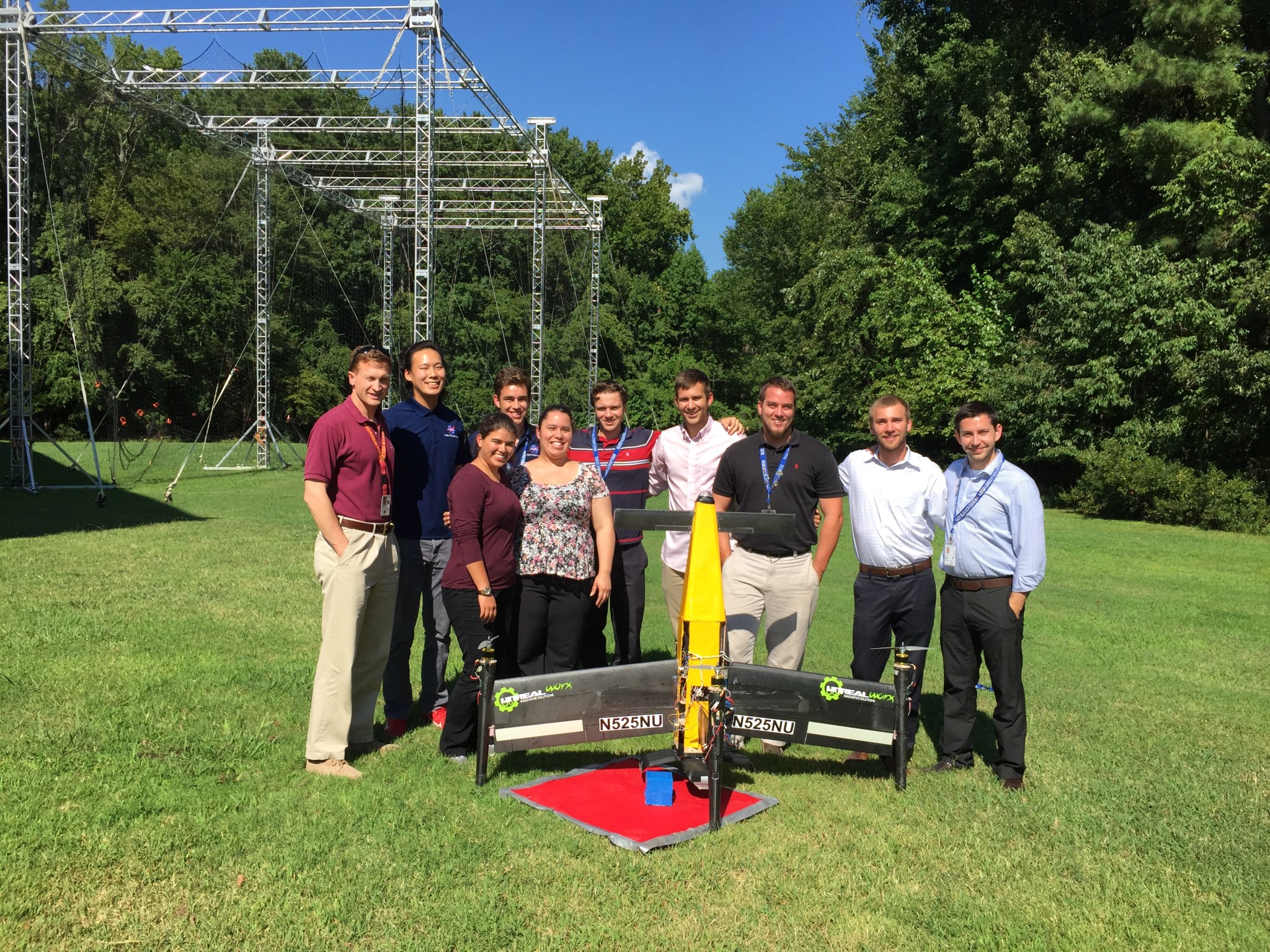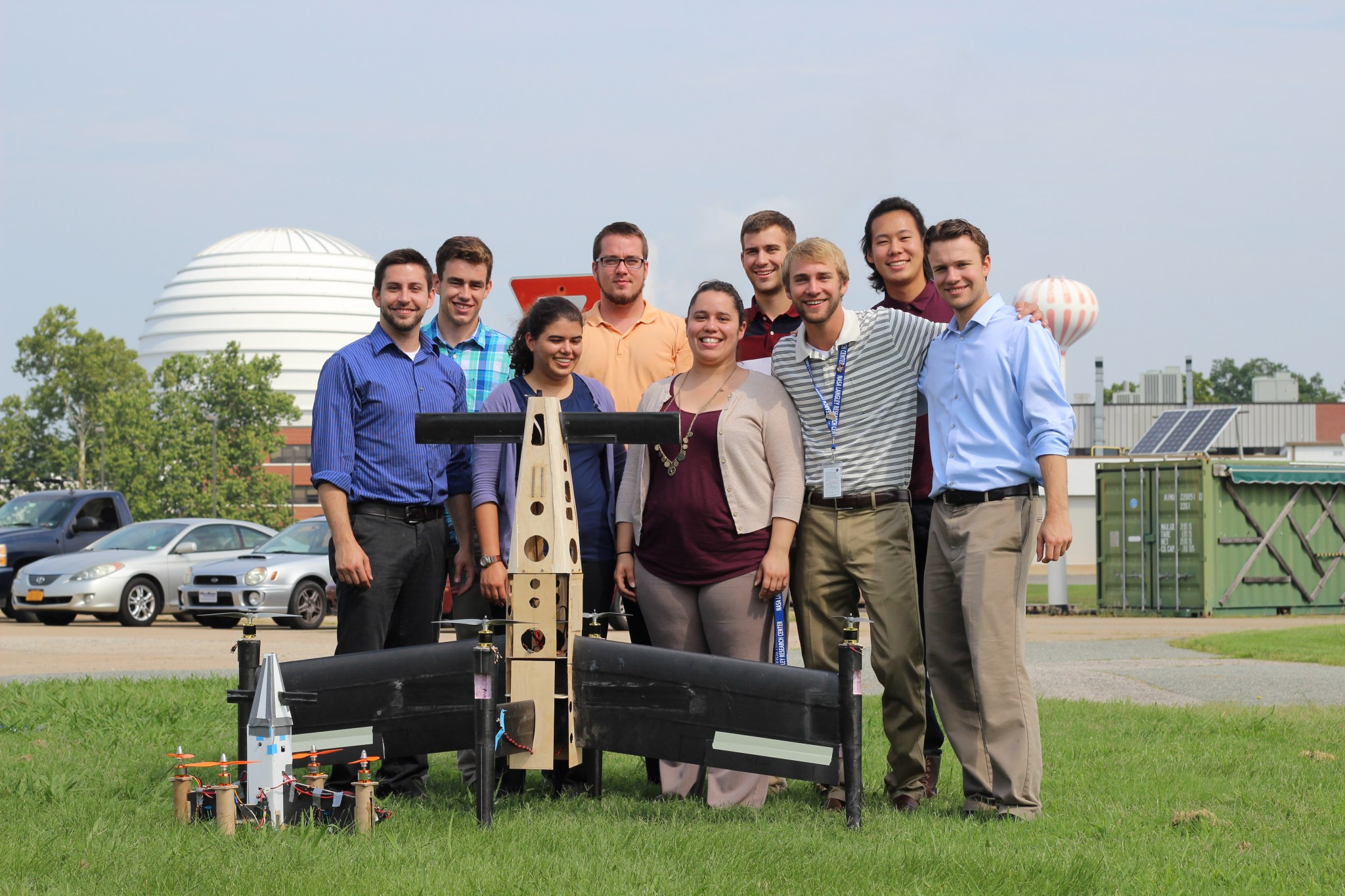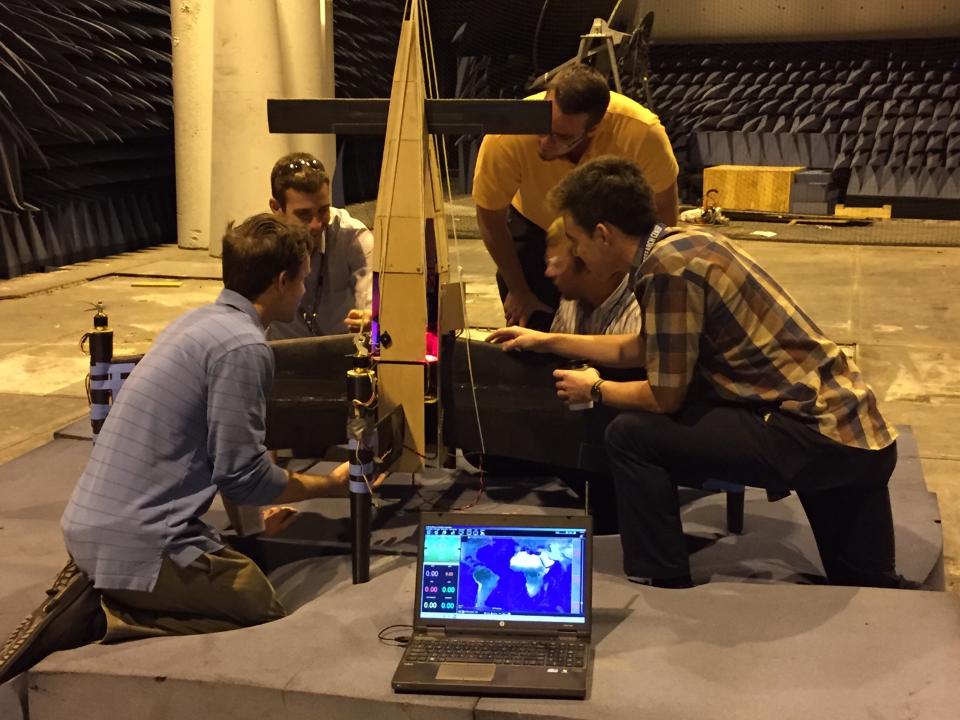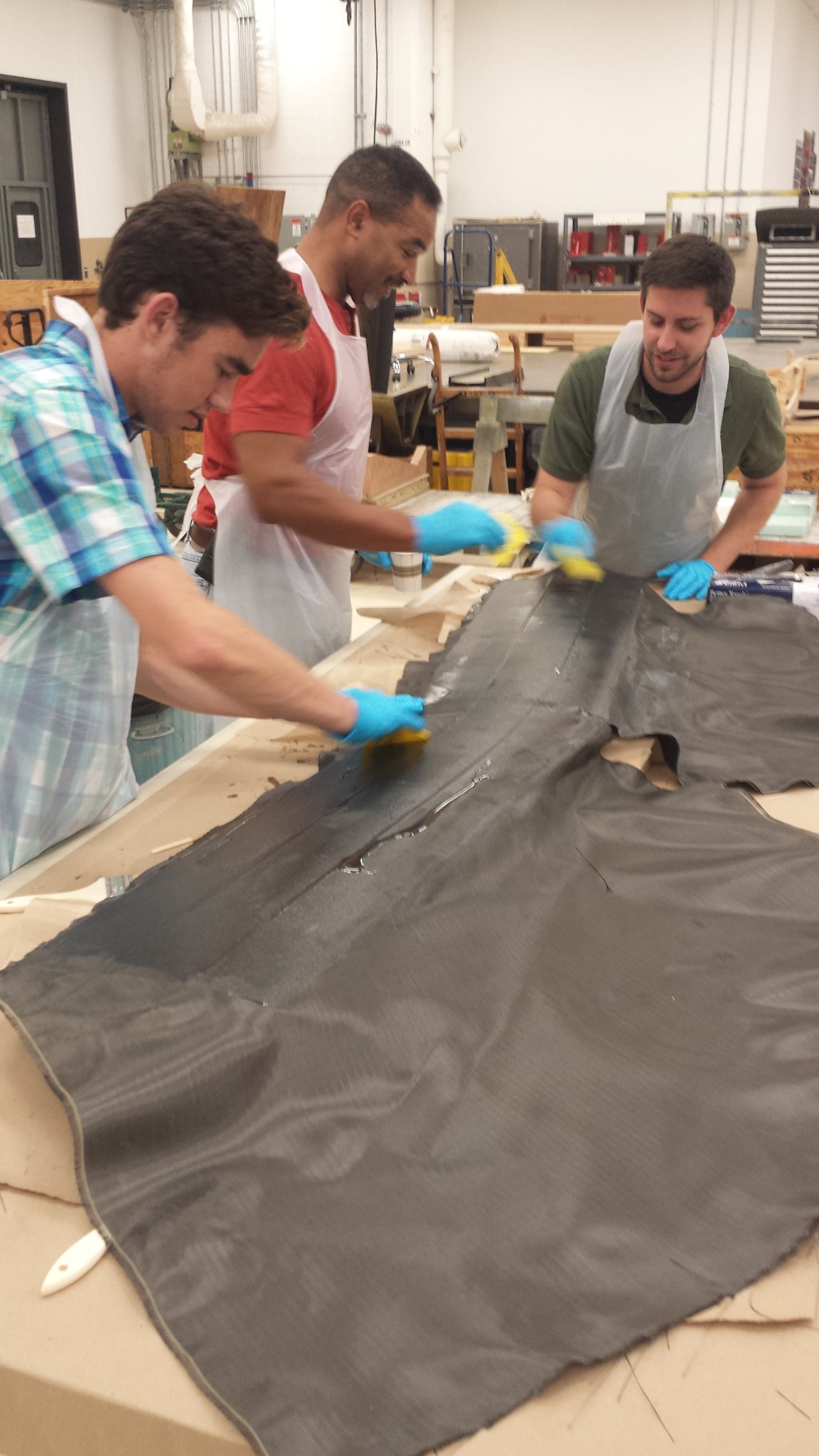NASA’s aeronautical innovators are getting help solving the research challenges they face every day by turning to the best and brightest of today’s college students.
The opportunity for pre-professional researchers to make real contributions comes courtesy of the Multidisciplinary Aeronautics Team Research Initiative (MARTI), an intense applied research program offered by NASA’s Aeronautics Research Mission Directorate.
“We’re offering a problem-based experience grounded in the reality of the applied aeronautics research efforts underway at NASA,” said Liz Ward, MARTI coordinator at NASA’s Langley Research Center in Virginia.
During the summer of 2015, MARTI researchers representing multiple disciplines and universities across the country gathered at Langley to work on a specific assignment related to Integrated Aviation Systems Research.
The task: design, build, and test an aerial package pickup and delivery system.
“The vehicle had to be able to fly without a pilot, scan many package labels, select the correct package, pick up the package, fly the package to its destination while meeting some maneuverability requirements, deliver the package in a controlled manner, and return to a home location,” said Henry Kwan, a senior from the University at Buffalo who worked on the mechanical team.
At the same time the drone – 52 inches tall, 66-inches wide, and designed to carry up to two pounds of cargo – also had to incorporate situational awareness for collision avoidance of ground obstacles and other flying vehicles.
“Essentially a more intense Amazon Prime Air,” Kwan said.
Starting with a blank sheet of paper, their own talents and the helpful collaboration of NASA engineers, the 2015 MARTI team were successful in their task. So successful, in fact, few details of what they came up with can be revealed – for now.
Patents are pending.
And that’s helpful because some of NASA’s key strategic research thrusts in aeronautics involve understanding what it might take to design more efficient vertical lift aircraft, as well as enable seamless unmanned aircraft system (UAS) operations with the nation’s air traffic control system.
NASA’s commitment to aeronautics research and its relevance to their lives was a key factor in motivating the MARTI students to directly participate in the work.
“Even though there is such a huge public emphasis on NASA’s role in space and its Mars program, NASA also is playing a big role with how airplanes may look in the future, and how UAS will be changing our everyday life,” said Zack Bassett, a student with the University of Texas at Austin who served as a project co-lead.
In addition to the real-world research contributions to NASA their work provides, the participants also benefited from their hands-on experience.
“I think it’s pretty amazing that a group of strangers came together for a summer and were able to accomplish so much within 12 weeks,” Bassett said.
The value of the program goes well beyond the satisfaction of successfully flying something built essentially from scratch and commercially available off-the-shelf components. Participants also gain a better understanding of the complexity of integrated research before they enter the workforce.
“Everything in school is conceptual and that makes it hard to fully understand what you are learning. By participating in MARTI, I could finally understand what I was learning by physically seeing it with my own eyes,” Kwan said.
The importance of teamwork in accomplishing a challenging goal was another of those real-world lessons learned by the MARTI team in 2015.
“By communicating effectively and actively listening to each other’s ideas and feedback, we were able to successfully complete the project,” said Melinda Darrow, a graduate student with Southern Methodist University who served as a systems engineer.
“It was awesome to encounter a place as prestigious and well known as NASA Langley, where I saw both men and women working together toward a common goal,” she added.
In addition to Langley, MARTI programs are typically offered at three other NASA centers that conduct aeronautics research: NASA’s Armstrong Research Center and Ames Research Center, both in California, and the Glenn Research Center in Ohio.





































